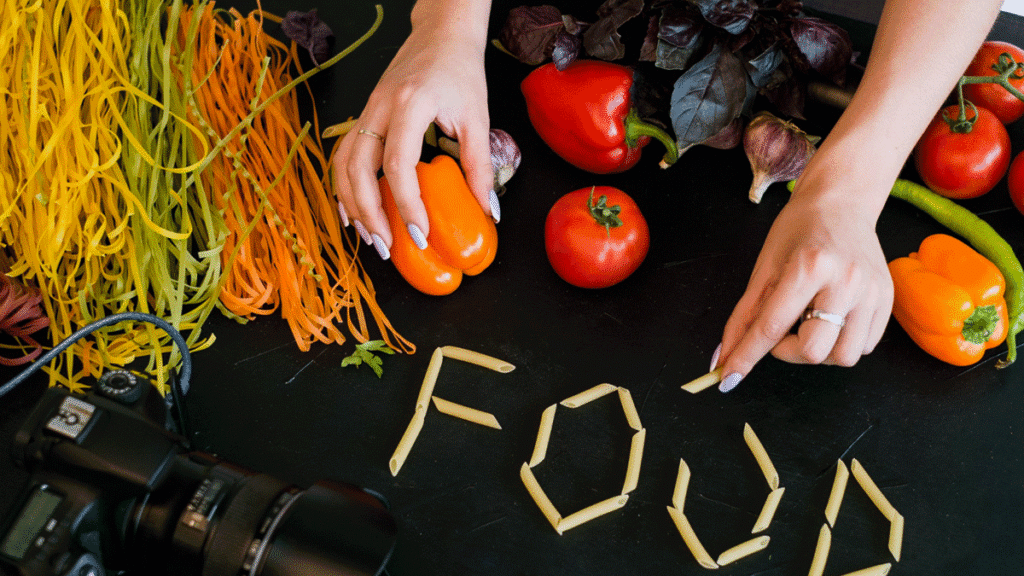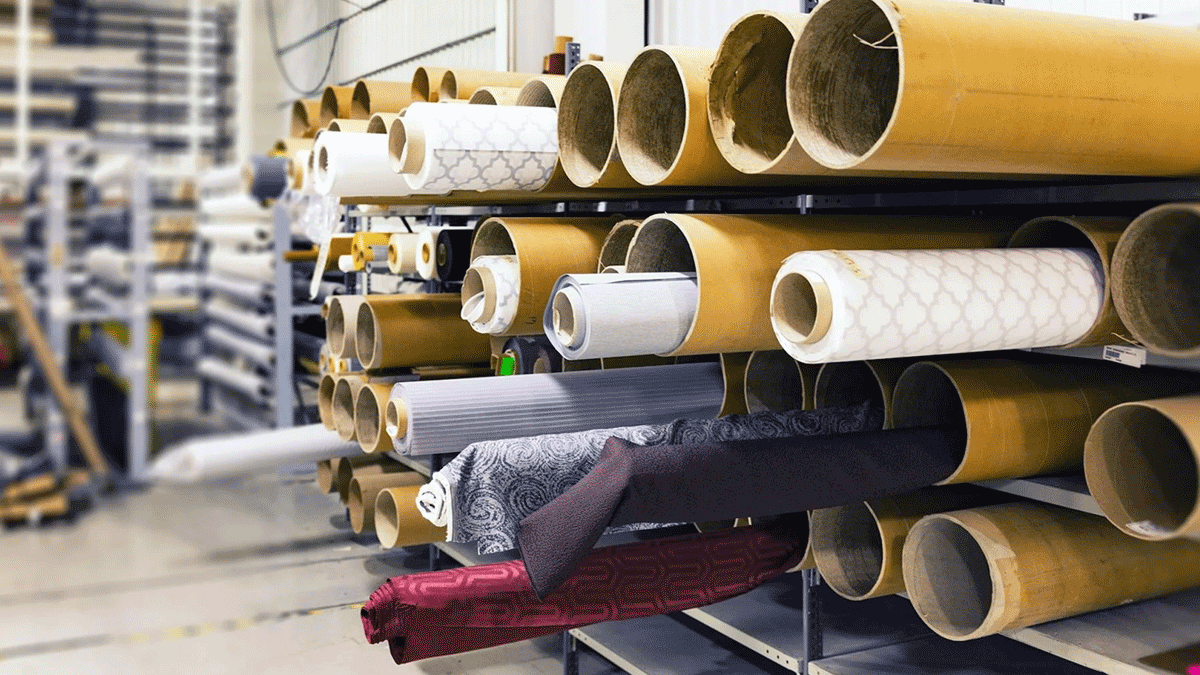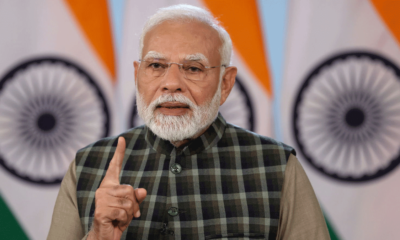Business
Food Business Ideas in India – Most Profitable Food Business Opportunities

Ever notice how the guy selling pav-bhaji at the beach makes more money than some corporate suits? That’s the magic of the food business in India – it doesn’t discriminate between MBAs and street-smart hustlers. We’re about to walk you through profitable food business ideas in India that work in 2025.
The food industry in India is growing at 15% annually, but here’s what nobody tells you: 7 out of 10 new food ventures fail in the first year. Why? Because they copy instead of innovating.
The difference between struggling and thriving isn’t just about having good recipes. It’s about finding that sweet spot where demand meets opportunity. And that’s exactly where things get interesting…

Most Profitable Food Business Opportunities in India
Cloud Kitchens: Low Investment, High Returns
The food delivery boom has made cloud kitchens a goldmine in India. With minimal real estate costs and focused operations, you can launch for as little as ₹5 lakhs. Many entrepreneurs are seeing 25-30% profit margins within months, especially when specializing in a particular cuisine or food category. No dining space means lower overheads and more flexibility to experiment.
Regional Cuisine Restaurants: Capitalizing on India’s Culinary Diversity
Indian food isn’t just butter chicken and biryani. The untapped market for authentic regional cuisines is massive. From Coorgi-Pandi Curry to Kashmiri Rogan Josh, restaurants showcasing lesser-known regional specialties are drawing crowds tired of the same old menus. The secret? Authenticity sells. Find a grandmother’s recipe, stick to traditional methods, and watch foodies line up.
Street Food Franchises: Transforming Local Favorites into Scalable Businesses
Street food in India isn’t just food—it’s emotion. Smart entrepreneurs are taking beloved street foods like pani-puri, vada-pav, and dosa and creating standardized franchise models. The formula works because you’re selling nostalgia with hygiene.
Organic Food Stores: Meeting Growing Health-Conscious Demand
The pandemic changed how Indians think about food. Organic stores aren’t just for the elite anymore—they’re mainstream business opportunities. The organic food market is growing at 25% annually, with urban Indians willing to pay premium prices for chemical-free products. Start small with a curated selection of staples, local produce, and specialty items that health-conscious shoppers struggle to find elsewhere.
Food Trucks: Mobile Ventures with Flexible Operations
Food trucks hit the sweet spot between low investment and high visibility. For about ₹10-20 lakhs, you can have a fully-equipped kitchen on wheels. The magic is in mobility—follow the crowds to festivals, office complexes, and residential areas. Many successful food truck owners report breaking even within 6-8 months by serving innovative fusion food that generates social media buzz.
Tech-Enabled Food Business Models
Food Delivery Apps: Creating Your Niche in a Growing Market
India’s food delivery market is booming, but the real opportunity isn’t competing with Swiggy or Zomato. It’s creating niche apps serving underserved segments like regional cuisines, health-focused meals, or corporate catering. These targeted approaches allow new entrepreneurs to carve out profitable spaces without fighting the giants.
Virtual Cooking Classes: Monetizing Culinary Skills Online
The pandemic changed how Indians learn cooking forever. If you’ve got culinary skills, virtual classes offer incredible business potential with minimal startup costs. Focus on specialized niches—authentic regional cooking, diet-specific recipes, or international cuisines—and package your expertise into subscription models or premium masterclasses.
Specialty Food Ventures with Growing Demand
A. Plant-Based Food Products: Tapping into the Vegetarian and Vegan Market
India’s plant-based food market is exploding right now. With 400 million vegetarians and growing health consciousness, there’s huge money in vegan cheese, mock meats, and dairy alternatives. Smart entrepreneurs are creating innovative products that honor traditional flavors while meeting modern dietary preferences.
B. Ready-to-Cook Meal Kits: Convenience with Traditional Flavors
Busy Indians still crave authentic home cooking but lack time. Ready-to-cook meal kits solve this perfectly by offering pre-portioned ingredients and simple instructions for making everything from butter chicken to dal-makhani in minutes. This market is growing 25% annually as urban professionals seek quality homemade taste without the prep work.
C. Artisanal Bakeries: Premium Offerings Beyond Mass-Produced Options
The cookie-cutter bakery scene is getting a gourmet makeover. Artisanal bakeries offering sourdough breads, French pastries with Indian twists, and custom celebration cakes are commanding premium prices. Consumers happily pay extra for quality ingredients, unique flavors, and Instagram-worthy creations that mass producers simply can’t match.
D. Traditional Indian Snacks with Modern Packaging: Reviving Heritage Foods
Grandma’s recipes are getting sleek makeovers. Traditional snacks like chakli, thepla, and chivda packaged in convenient, preservative-free formats are flying off shelves. Modern consumers crave nostalgic flavors but demand better ingredients, attractive packaging,g and longer shelf life—creating perfect opportunities for innovation in India’s beloved snack sector.
Food Processing and Manufacturing Opportunities
A. Packaged Spices and Masalas: Value-Added Traditional Products
India’s spice market is booming! Transform family spice blends into packaged products that preserve authenticity while meeting modern demands. The secret? Consistent quality and eye-catching packaging that tells your story. Many successful entrepreneurs started small, grinding spices at home before scaling to commercial production. With minimal startup costs and huge market potential, this could be your golden ticket.
B. Pickles and Preserves: Scaling Family Recipes for Commercial Success
Grandma’s pickle recipe could be your next business breakthrough! Indian pickles enjoy massive demand both domestically and internationally. The magic happens when you maintain traditional flavors while ensuring food safety and longer shelf life. Start with regional specialties that aren’t widely available commercially. Modern packaging and smart marketing highlighting “homemade quality” can help you carve out a loyal customer base seeking authentic tastes.
C. Frozen Foods: Meeting Urban Convenience Needs
Urban Indians crave convenience without sacrificing taste. Frozen parathas, ready-to-cook curries, and pre-prepared meal kits are flying off the shelves. The trick is preserving authentic flavors while extending shelf life. Focus on products that solve real problems – quick breakfasts, easy lunches for working professionals, or complete dinner solutions. With proper cold chain infrastructure, you can start supplying locally before expanding to wider markets.
D. Healthy Snack Production: Alternatives to Conventional Junk Food
Health-conscious Indians are desperately seeking better snacking options. Millet-based munchies, baked, not fried treats, and traditional snacks with reduced oil content are creating waves. The winning formula combines nutrition with familiar flavors people already love. Start experimenting with healthier versions of popular snacks – roasted makhanas, baked chaklis, or whole-grain mathris could become your signature products in this rapidly growing segment.
Investment and Financial Considerations for Food Businesses
Government Schemes and Subsidies for Food Entrepreneurs
Starting a food business in India? The government has your back with schemes like PMFME offering up to ₹10 lakh in subsidies. NABARD’s food processing fund and MUDRA loans provide accessible financing options for entrepreneurs across different scales, from street food vendors to full-scale restaurants.
Licensing Requirements and Food Safety Regulations
Navigating the regulatory maze is non-negotiable for food businesses. You’ll need an FSSAI license (₹2,000-₹7,500 depending on your size), GST registration if your turnover exceeds ₹40 lakhs, and local municipal permits. Don’t skip health certificates for your staff either – inspectors check these during surprise visits!
Funding Options: From Bootstrap to Venture Capital
Money makes your food business dream a reality. Bootstrapping works for home kitchens starting at ₹50,000, while bank loans offer ₹5-25 lakhs for mid-sized operations. Angel investors typically invest ₹25-50 lakhs in promising concepts, while VCs look for scalable models with ₹1 crore+ funding but expect 25-30% equity.
Marketing Strategies for New Food Businesses
Leveraging Social Media for Food Business Growth
Instagram and Facebook are game-changers for new food businesses in India. Mouth-watering food photos generate instant buzz, while stories showing behind-the-scenes prep create authentic connections. Consistent posting of your delicious biryani, street chaat, or homemade sweets builds a following that converts to real customers.
Building a Strong Brand Identity in a Competitive Market
Your brand isn’t just a logo—it’s your entire food story. What makes your pani-puri different from the shop down the street? Maybe it’s your grandmother’s secret recipe or your commitment to organic ingredients. This unique angle becomes your competitive edge in India’s crowded food scene.
Collaborating with Food Influencers and Bloggers
Food influencers can skyrocket your visibility overnight. When that popular Delhi food blogger shares your butter chicken or that Mumbai influencer features your vada-pav, their followers become your potential customers. Start small—invite local food enthusiasts for tastings and watch word spread like wildfire.
The Indian food industry presents countless opportunities for entrepreneurs who are passionate about culinary innovation and ready to meet evolving consumer demands. From cloud kitchens and food delivery apps to specialty regional cuisine restaurants and organic food manufacturing, the sector offers diverse pathways to success. The growing interest in health-conscious options, international cuisines with an Indian twist, and sustainable food practices further expands the landscape for profitable ventures.
Starting your food business journey requires careful planning, adequate capital investment, and a strong marketing strategy that leverages both digital platforms and traditional channels. Whether you’re considering a tech-enabled model, a specialty food venture, or a manufacturing opportunity, success lies in identifying your unique value proposition and delivering consistent quality. With India’s rich culinary heritage as your foundation and innovation as your guide, your food business can thrive in this dynamic and ever-expanding market.
Business
Small Business Ideas for Housewives in India

You’re staring at a pile of bills while the kids nap, wondering if there’s a way to contribute without sacrificing family time. You’re not alone – 64% of Indian housewives want financial independence while maintaining their home responsibilities.
The truth about small business ideas for housewives in India is that they’ve evolved far beyond the stereotypical pickle-making ventures (though those still work!). With smartphones, social media, and shifting cultural attitudes, your options have multiplied.
But here’s what nobody tells you – the most successful housewife entrepreneurs don’t pick random side hustles. They match their existing skills with market needs in a specific way that’s surprisingly simple once you know the formula.
Understanding the Market Opportunity for Housewives in India

The Growing Entrepreneurship Landscape for Women in India
Indian housewives are stepping into entrepreneurship like never before. With government initiatives like MUDRA loans and Stand-Up India specifically targeting women entrepreneurs, the barriers to entry have significantly decreased. Digital platforms have opened new markets, letting women run businesses without leaving home.
Leveraging Domestic Skills for Business Opportunities
Housewives have unique skills they’ve mastered for years – cooking, crafting, childcare, and home management. These aren’t just domestic duties anymore; they’re marketable talents worth real money.
Current Market Trends Favoring Home-Based Businesses
The post-pandemic economy has created perfect conditions for home-based businesses. E-commerce adoption has skyrocketed, consumers increasingly support local and handmade products, and remote work culture has normalized business-from-home models. Social media platforms offer free marketing channels previously unavailable to small entrepreneurs.
Crafting and Creative Ventures
Handmade jewelry and accessories
Turn your creative flair into cash by crafting unique jewelry pieces. Indian housewives are crushing it with handmade earrings, necklaces, and bangles using beads, polymer clay, or traditional materials. The startup costs are super low, and you can sell through Instagram, local exhibitions.
Home decor and gift items
Got an eye for beautiful spaces? Create hand-painted pots, macramé wall hangings, or customized gift baskets. Many housewives are making serious money crafting personalized home decor that reflects Indian aesthetics with a modern twist. Weekend craft fairs and online marketplaces are perfect selling spots.
Digital and Online Business Opportunities
Social Media Management Services
Looking to monetize your social media skills? Indian housewives are crushing it by managing accounts for local businesses. Many entrepreneurs desperately need help with their Facebook, Instagram, and Twitter, but don’t have time. Your flexible hours let you schedule posts, engage with followers, and analyze metrics—all while working from home around family commitments.
Content Creation and Blogging
Turn your passion into profit through blogging or content creation. Whether you’re a talented writer, photographer, or video creator, businesses need your skills. Start by creating content in areas you’re already knowledgeable about—cooking, parenting, fashion, or home organization. Platforms like WordPress or Medium make it easy to showcase your work and attract clients.
E-commerce Store for Curated Products
The online shopping boom creates perfect opportunities for housewives to launch e-commerce stores. Identify unique products—handmade items, specialty foods, clothing, or crafts—and sell them through platforms like Shopify or Instagram. Many successful Indian housewives have built thriving businesses by carefully selecting products that solve specific problems for their target customers.
Service-Based Business Models
Beauty and wellness services from home
Imagine turning your beauty skills into a business right from home! Many Indian housewives are now offering services like mehendi application, makeup artistry, and hair styling. With minimal startup costs and flexible hours, you can start small and expand as your client base grows.
Event planning and coordination
The event planning business is booming in India! As a housewife with organizational skills, you can coordinate weddings, birthday parties, and corporate events. Start by planning events for friends and family to build your portfolio before marketing your services to a wider audience.
Interior decoration consultancy
Got an eye for design? Indian homes are increasingly seeking professional interior advice. You can offer consultations on color schemes, furniture arrangement, and decor selection. Begin with small projects and use before-and-after photos to showcase your talent on social media.
Transforming Skills into Successful Ventures
The entrepreneurial landscape in India offers numerous opportunities for housewives looking to establish their own businesses. From traditional crafting ventures that leverage inherent artistic abilities to digital opportunities that provide flexibility and global reach, the options are diverse and accessible. Service-based models allow for utilizing professional skills and qualifications, while creative ventures can transform hobbies into profitable enterprises.
As you embark on your entrepreneurial journey, remember that success often comes from combining your existing skills with market demands. Start small, test your business concept, and gradually scale as you gain confidence and customer trust. The key is to begin with something you’re passionate about while ensuring it addresses a genuine need in your community. With determination and the right approach, you can build a thriving business that balances your domestic responsibilities while creating financial independence and personal fulfillment.
Business
Manufacturing Business Ideas in India – Low Investment

Ever wondered why India’s manufacturing sector has a $1 trillion target for 2025, yet most entrepreneurs still flock to tech and services? We’ve seen this pattern repeatedly, with promising manufacturing opportunities hiding in plain sight.
We’re about to reveal manufacturing business ideas in India that combine low investment with high-profit potential. From food processing to textile manufacturing, these options leverage India’s competitive advantages without requiring massive capital.
The manufacturing landscape here is evolving fast. Government initiatives like “Make in India” have created unprecedented opportunities for small and medium manufacturers to enter global supply chains.
But here’s what most aspiring business owners miss: the sweet spot isn’t in competing with massive factories, but in finding specialized niches where smaller operations can thrive. And the most successful among them share one surprising trait…
Profitable Manufacturing Sectors in India for 2025

A. Sustainable Textile Production: Eco-friendly Fabrics and Recycled Materials
We’ve seen sustainable textile production explode in India this year. The demand for eco-friendly fabrics made from organic cotton, hemp, and recycled polyester has created incredible opportunities for new manufacturers. Many Indian entrepreneurs are now tapping into this green goldmine, combining traditional weaving techniques with modern sustainable practices.
B. Food Processing: Value-added Agricultural Products
We’re witnessing a revolution in India’s food processing sector right now. By transforming raw agricultural products into packaged foods, spice mixes, ready-to-eat meals, and health-focused snacks, manufacturers are capturing massive value. The beauty of this sector? It works at any scale – from home kitchens to large factories – with India’s diverse culinary traditions providing endless product possibilities.
C. Electric Vehicle Components: Batteries, Motors and Controllers
We’re riding the EV wave in India, and it’s creating a manufacturing tsunami! The demand for batteries, motors, and controllers is off the charts as both domestic and international automakers race to electrify transportation. With government incentives and the push toward green mobility, we’re seeing smart entrepreneurs establish specialized manufacturing units for these critical components.
D. Pharmaceutical Manufacturing: Generic Drugs and Medical Supplies
We’ve positioned India as the “pharmacy of the world” for good reason. The pharmaceutical manufacturing sector continues to thrive with massive opportunities in generic drugs, vaccines, and medical supplies. Post-pandemic awareness has only accelerated this growth, with domestic and export markets hungry for quality, affordable healthcare products manufactured on Indian soil.
E. Renewable Energy Equipment: Solar Panels and Wind Turbine Parts
We’re harnessing India’s abundant sunshine and wind through manufacturing innovation. The renewable energy equipment sector has become a hotbed for entrepreneurship, with businesses producing solar panels, mounting structures, and wind turbine components. The government’s ambitious clean energy targets have created a perfect storm of opportunity for manufacturers entering this rapidly growing space.

Manufacturing Business Ideas in India: Opportunities for Growth in 2025
India’s manufacturing landscape offers tremendous potential for entrepreneurs looking to establish themselves in this sector. We’ve explored various profitable manufacturing sectors that are thriving in 2025, from automotive components and electronics to textiles and pharmaceuticals. Each of these industries presents unique advantages, including government support through initiatives like “Make in India” and growing domestic and international demand.
We also highlighted several low-investment manufacturing opportunities that make entrepreneurship accessible to those with limited capital. Whether you’re considering starting a small-scale food processing unit, handcrafted goods production, or eco-friendly packaging solutions, there are pathways to enter the manufacturing sector without massive initial investments. As you embark on your manufacturing journey in India, we encourage you to thoroughly research your chosen niche, understand regulatory requirements, and leverage available government incentives to maximize your chances of success in this dynamic and rewarding sector.
Business
Donald Trump Announces Fresh Tariffs – Which Countries Will Suffer Most?

President Donald Trump Announces Fresh Tariffs
In a move that has sent ripples through global markets, President Donald Trump has announced a new wave of tariffs set to take effect on August 1, 2025. The most severely impacted nations face steep rates of up to 40%, with Myanmar and Laos bearing the brunt of these economic measures. This escalation marks a significant turning point in America’s trade policy, as the administration adopts an increasingly aggressive stance toward what it perceives as unfair trading practices.
While the deadline looms large on the economic horizon, Trump has indicated it’s “not 100 percent firm,” suggesting room for diplomatic maneuvering. So far, only the United Kingdom and Vietnam have successfully negotiated trade agreements with the U.S., leaving 12 other trading partners scrambling to secure deals before the tariffs kick in. The President has also issued a stark warning: any retaliatory measures from affected nations will trigger equivalent responses from the United States, potentially spiraling into an even more intense trade conflict. As global markets brace for impact, let’s examine which countries stand to lose the most, how these tariffs will be structured, and what economic implications we can expect in the coming months.

Trump’s New Tariff Announcement
On July 7, 2025, President Donald Trump signed an Executive Order extending certain tariff rates until August 1, 2025. This decision follows his April 2025 declaration of a national emergency in response to trade practices threatening U.S. economic and national security. The administration has positioned these measures as necessary steps to address the persistent U.S. goods trade deficit and establish more balanced bilateral trade relationships.
Implementation date set for August 1
The new reciprocal tariff rates will take effect on August 1, 2025, replacing the previous rates that were set to expire on July 9. This timeline provides affected countries with a short adjustment period while maintaining pressure for trade concessions. The implementation follows approximately 90 days after the modification of previous tariff rates, during which time numerous countries have engaged in negotiations with the U.S. administration.
Tariff rates reaching up to 40% for some countries
The announced tariff structure varies significantly by country, with some nations facing substantial increases. Countries that have received notification of their new rates include Japan and South Korea (both at 25%), South Africa (30%), and others facing even higher rates approaching 40%. These rates represent a dramatic increase from historical tariff levels, with the average U.S. tariff rate jumping from 2.5% to an estimated 27% since Trump’s return to office—the highest level in over a century.
Flexibility in the negotiation timeline
While implementing these substantial tariffs, the Trump administration has signaled its willingness to adjust rates based on trade negotiations. Countries that have agreed to lower their tariffs or eliminate non-tariff barriers have seen more favorable treatment, with some experiencing lower rates than previously announced. The administration emphasizes that countries willing to manufacture on U.S. soil will face no tariffs, creating a significant incentive for foreign businesses to invest in American manufacturing facilities.
With these new tariff announcements established, let’s examine which countries will bear the heaviest economic impact from Trump’s trade policy in our next section, “Countries Most Affected by New Tariffs.”
Countries Most Affected by New Tariffs
A. Myanmar and Laos face the highest rates at 40%
Now that we’ve examined Trump’s tariff announcement, let’s examine which countries are most affected. Myanmar and Laos face the steepest tariffs at 40%, impacting Myanmar’s clothing exports and Laos’ electronic goods. Myanmar’s military government, represented by Maj. Gen. Zaw Min Tun has expressed willingness to negotiate, while both nations struggle with the highest penalty rates among all targeted countries.
B. Impact on 14 trading partners
The tariffs affect a total of 14 trading partners with varying rates. After Myanmar and Laos at 40%, Cambodia and Thailand face 36% tariffs (Cambodia’s rate was reduced from an initially proposed 49%). Bangladesh follows with a 35% tariff primarily affecting its crucial garment industry. South Africa faces a 30% rate, while Japan, Malaysia, South Korea, and Tunisia all received 25% tariffs targeting their key export sectors, including automobiles and electronics.
C. Exceptions for countries with finalized agreements (UK and Vietnam)
Some nations have successfully negotiated exemptions from these punitive measures. The United Kingdom and Vietnam have finalized trade agreements with the United States, earning them complete exceptions from the new tariff regime. These successful negotiations demonstrate the potential path forward for affected countries, as President Trump’s administration has indicated a willingness to remove tariffs for nations that secure satisfactory trade deals. With these country-specific impacts established, we’ll next examine the tariff structure and implementation timeline in greater detail.
Photo Source: https://www.trump.com/leadership/donald-j-trump-biography
-

 Cover Story6 months ago
Cover Story6 months agoDonald Trump’s Impact on US-India Relation
-

 Cover Story6 months ago
Cover Story6 months agoNarendra Modi Visionary Leader India Bright-Future
-

 Cover Story6 months ago
Cover Story6 months agoMaha Kumbh Mela 2025 Prayagraj Journey of Faith
-

 Politics4 months ago
Politics4 months agoRuby Phogat Yadav BJP Delegation Congratulates CM Rekha Gupta
-

 Business6 months ago
Business6 months agoWomen Entrepreneurs Modern Economy
-

 Pharma6 months ago
Pharma6 months agoIndia Pharmaceutical Industry Embracing Technology $130 Billion Future
-

 EV6 months ago
EV6 months agoIndia New Guidelines EV Charging Stations Sustainable Mobility
-

 E&E6 months ago
E&E6 months agoBHEL Financial Recovery Power Sector Green Energy Investments










